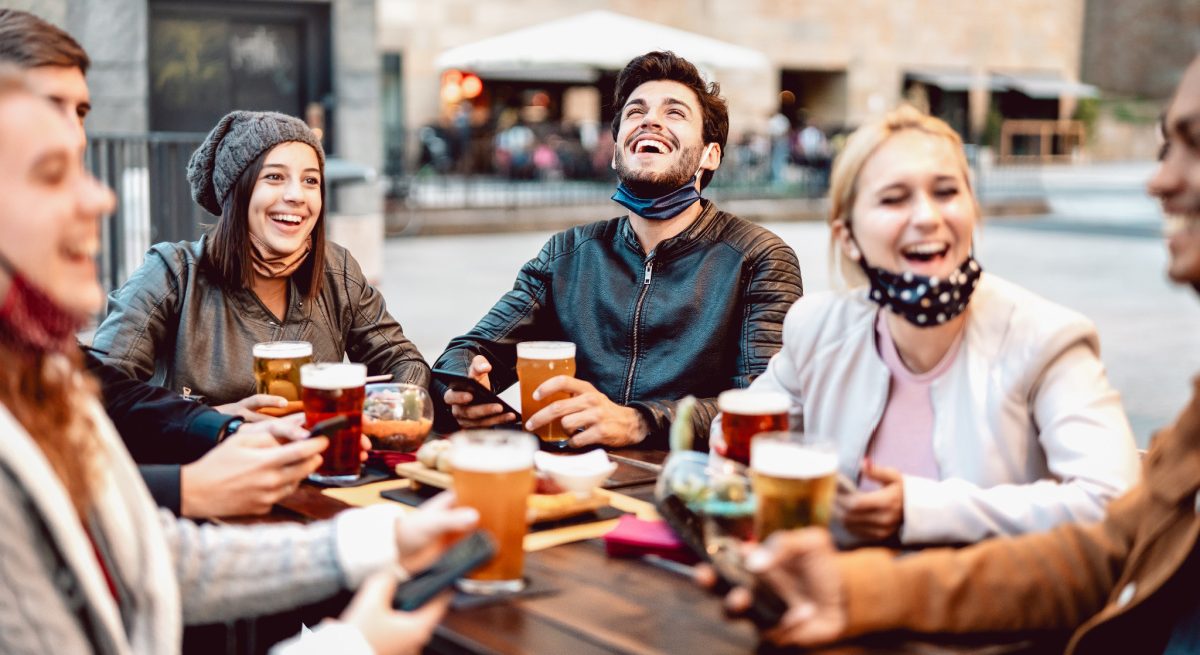Where Safety Meets Satisfaction — Tips For COVID-Era Restaurateurs to Elevate Their Customer Offerings
3 Min Read By Kevin Possell
The pandemic has left restaurateurs around the world scrambling for ways to diversify their product offerings and continue to attract business. In a time when uncertainty abounds and cost-effectiveness is essential, businesses that can still offer their clients a safe, comfortable place to retreat will be that much closer to survival. Smart business owners who find inexpensive, creative ways to anticipate and fulfill customers’ needs will stand out through COVID-19 and beyond.
Here are some needs that customers are likely to be prioritizing right now, with some low-cost ideas on how to meet those needs.
Safety and Normalcy
In recent months, the public’s primary need has been to feel safe, so restaurant management should ensure guests are aware of efforts to protect their health and well-being. These efforts should be made clear but not necessarily glaring or overt; customers’ very important secondary need is to enjoy the culinary arts in an environment of some normalcy. Successful restaurants will create a customer experience that features abundance and the elevated hospitality that will make the experience memorable.
The Human Touch
The pandemic has required many facilities in the service industry to pare down the number of guests they can serve in public spaces simultaneously — but that doesn’t mean they must forfeit on establishing personal connections. Restaurant management can put some thought into reconfiguring any dining area to make the space feel exclusive and welcoming, not bare or half-empty; this will likely mean the removal of furnishings that don’t allow social distancing. Then the same devices that make guests feel more secure, such as safety screens between booths, can be erected in a way that increases the feel of intimacy or privacy. If possible, restaurants should consider expanding into casual and comfortable outdoor seating arrangements that can feature a more pre-pandemic feel.
Other practices can be updated to enhance the feeling of personal service; for instance, table settings can be placed as guests are seated. Employees should be coached on how to establish connections, which can be difficult through masks and distance. Tone of voice becomes especially important when customers can’t gather cues from facial expressions. Employees should be encouraged to take an extra minute or two to make guests feel at ease and not rushed.
Restaurants can continue to foster the aura of personal service and exclusivity by using online booking services and offering phone reservations. Existing reservations can now be confirmed through text, which could also mention any promotions that encourage guests to visit in person: a personalized drink special or complimentary appetizer, extra loyalty rewards, etc.
Variety
In a way, the pandemic has created the feeling of being in a time warp; every day is much like any other as we all look at the same walls with the same family members. On the other hand, our society has also become very comfortable with ordering online and receiving contactless home or curbside delivery. Restaurants are increasing their dining options to include these services, which provide their clientele some welcome variety. Management should ensure their processes are the most hospitable they can be by regularly completing their facility’s own online ordering and delivery process. If the process isn’t effortless and the employees personable and polite, processes and employee training should both be updated immediately.
Restaurants can also elevate hospitality and increase variety by thinking outside the box in terms of service offerings and promotions. They can, for instance:
- Offer box lunch specials for pickup by those working from home.
- Turn part of the dining area into a (properly clean and socially distanced) café-style coworking space during lunch hours.
- Create take-out versions of signature dishes for families to cook at home, complete with side dishes and drink suggestions.
- Put together a PDF of easy recipes from the head chef that will help isolated families make something tasty and different using common pantry staples.
- People are still gathering in small, private groups, so catering options can be updated to include pick-up or contactless delivery.
Fulfilling Other Needs
But in addition to these changes, successful restaurants will actively seek other ways, no matter how small or low-cost, to elevate the hospitality their patrons experience. One winning strategy has been to develop branded, travel-size or single-use amenities that are offered on-premise or included in takeout or delivery orders. These specially packaged items are chosen to anticipate customers’ needs and can include condiments, hand wipes, facial tissues and travel-sized hand sanitizers — all customized with the restaurant brand. Discreetly branded disposable masks could also be worn by employees and presented to on-premise patrons who forget theirs. These small touches play up the personalization of the experience and show customers they’re in good and considerate hands. Most importantly, this “hospitality kit” can be scaled up or down depending on budget availability.
Elevating Hospitality
The brands that survive this economic slowdown will be those that use it as an opportunity to build or strengthen relationships. Remember that a restaurant doesn’t just sell food; it offers unique experiences and personal connection in a time when these are very much lacking. Any cost-effective measures that restaurant management can take to perfect these experiences and elevate the hospitality guests experience will support the success of the business now and into the future.


